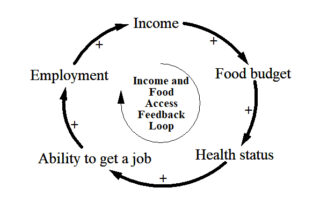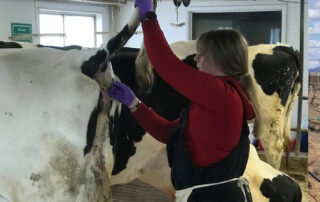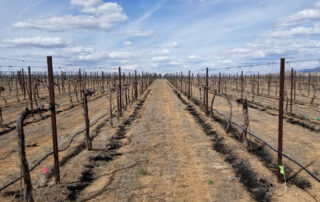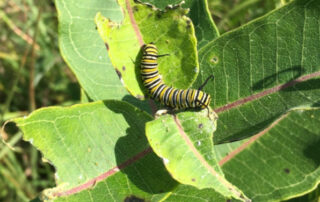From the FFAR Blog
Even the longest journey starts with one little step
By Francesco Cappai, 2018-2021 FFAR Fellow
Hello reader, let me introduce myself. I am Francesco Cappai, an Italian student currently pursuing a Ph. D. in the US at the University of Florida and a FFAR Fellow. I would like to share my story with special attention to our younger colleagues interested in pursuing a career in agricultural sciences who might find themselves wondering “Can my job make a difference?”.
Feedback Loops and Food Access
By Gwendolyn Donley, 2018-2021 FFAR Fellow
We see cycles of problems and solutions in our everyday lives. For example, when I’m happy, I play with my dog, Koschei, more, and when I play with Koschei more, I become happier. This is an example of a reinforcing feedback loop – events or behaviors linked in a way to amplify or balance each other over time. Some cycles, such as those aptly named “balancing feedback loops,” balance out over time ]. When I’m hungry, I eat. After I eat, I’m not hungry, so I stop eating for a while. And so the cycle continues. We live in a world of balancing and reinforcing loops pulling us toward an equilibrium. Right now, we’re experiencing disruptions to our normal equilibrium with system-wide shifts brought on by COVID-19.
Vitamin A, Healthy Cows, and Less Antibiotics
By Jaime Strickland, 2018-2021 FFAR Fellow
Hippocrates once said, “Let food be thy medicine and medicine be thy food”. That link between health and diet applies not only to people, but also to animals. As a FFAR Fellow, I am researching the role between the diet and health of dairy cows, specifically the role of vitamin A.
Can biochar help adapt agriculture to a hotter, dryer climate?
By Shelby Hoglund, 2018-2021 FFAR Fellow
Let’s talk about desert agriculture. Warning: you may feel thirsty. Agriculture in the arid Southwestern United States is productive year-round, with conditions that permit crops to grow the entire year. But with a predicted hotter, dryer climate looming in the near future, desert agriculture faces challenges.
Food for the Future: How Artificial Intelligence Can Improve Drought Resistance
By Kevin Xie, 2018-2021 FFAR Fellow
We breathe in oxygen and breathe out carbon dioxide (CO2); plants do the opposite. But how, exactly, do plants “breathe”? My interest in plants traces way back to when I was in grade school. I was given some ugly seeds to sow in pots on the balcony of my home and was amazed when spectacular flowers grew over the following months. Since then, I have enjoyed growing plants as a hobby and later further redirected my research interest into crops to help breeding for the future warmer and drier environment. Understanding how plants “breathe” is a key step in knowing how efficient they can produce.
Milkweeds: Medicine for Monarchs?
By Annie Krueger, 2018-2021 FFAR Fellow
Imagine a world where farmers could no longer use most insecticides, had limited access to herbicides and that these setbacks were caused by a butterfly.
The monarch butterfly, the same butterfly you may have once watched emerge from a chrysalis in a third-grade classroom, is currently being considered for listing under the Endangered Species Act. Milkweed, the host plant for monarchs breeding habitat, has been greatly reduced due to an expansion of farmland and increased use of herbicides, contributing to a dramatic population decline for monarchs.






